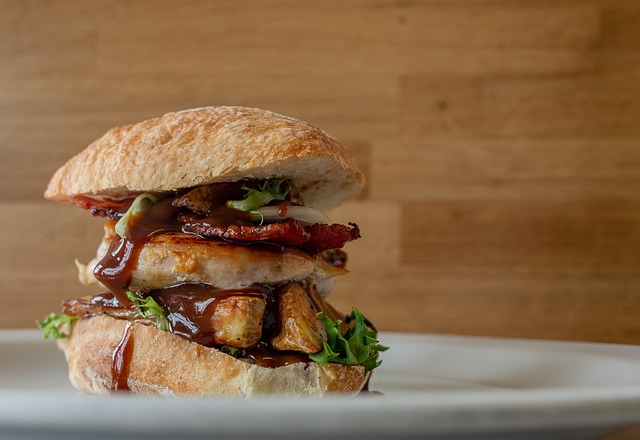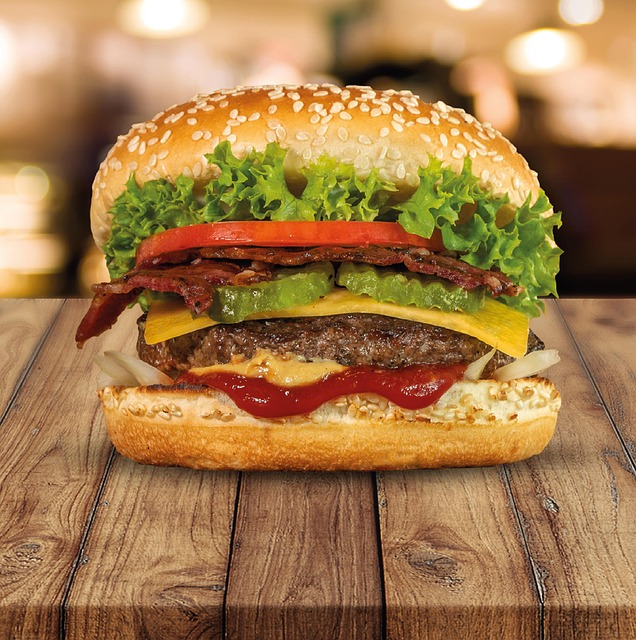The Burger Challenge metaphorically illustrates market dynamics in competition research, highlighting the need for businesses to adapt to changing customer preferences and stay ahead of industry trends. Identifying competitors through analysis of existing brands and their unique selling points is crucial for entering or disrupting a market. Studying consumer behavior, market trends, and using strategic tools like SWOT analysis allows businesses to position themselves effectively and find their niche. The Burger Challenge provides insights into successful branding and offerings that capture attention and foster loyalty in competitive markets by appealing to target audience preferences.
Competition research is a powerful tool for brands seeking an edge. In this insightful guide, we explore four key strategies to navigate the competitive landscape, using the compelling example of the burger market. From understanding intricate market dynamics through the symbolic ‘Burger Challenge’, to identifying and analyzing rivals’ tactics, you’ll discover how to position your brand for success. Learn from industry best practices (and pitfalls) to gain a competitive advantage and stand out in a crowded market.
- Understanding Market Dynamics: The Burger Challenge
- Identifying Competitors: Mapping the Landscape
- Analyzing Strategies: Learning from the Best (and Worst)
- Positioning Your Brand: Standing Out in the Crowd
Understanding Market Dynamics: The Burger Challenge

The “Burger Challenge” is a powerful metaphor for understanding market dynamics in competition research. It illustrates how businesses operate within a complex web of factors influencing consumer choices and industry trends. Imagine two burger joints, Burger A and Burger B, both offering similar yet distinct menu items. The challenge lies in navigating the ever-changing preferences of customers and staying ahead of the curve.
Market dynamics in this scenario involve analyzing customer behavior, identifying unique selling points, and adapting strategies accordingly. For instance, if Burger A realizes that health-conscious consumers are on the rise, they might introduce plant-based options to cater to this demographic. Conversely, Burger B could focus on enhancing their signature sauces or expanding delivery partnerships to stay competitive. This constant evolution is crucial in a fast-paced market, where success requires staying relevant and meeting shifting demands.
Identifying Competitors: Mapping the Landscape

Identifying your competitors is a crucial step in any business strategy, especially when entering a new market or launching a product that promises to disrupt an industry, like the burger challenge. The first task is to map out who your direct and indirect rivals are; this involves a comprehensive analysis of the existing players in your sector. It’s not just about spotting the biggest brands, but also understanding the niche markets they serve and the unique selling points they offer. For instance, in the fast-food industry, competitors could range from traditional burger chains to specialty restaurants offering gourmet burgers or plant-based alternatives.
A strategic approach to mapping this landscape involves studying market trends, consumer behavior, and industry reports. Tools like SWOT analysis can help you categorize competitors based on their strengths, weaknesses, opportunities, and threats. This process allows for a nuanced understanding of the competitive environment, enabling you to position your business effectively in the burger challenge and carve out a unique space in the market.
Analyzing Strategies: Learning from the Best (and Worst)

Analyzing competition through challenges like the Burger Challenge offers a unique lens into market dynamics and consumer preferences. By studying the strategies employed by top-performing businesses, aspiring entrepreneurs can gain valuable insights. For instance, observing how leading burger chains adapt their offerings to meet diverse tastes—from gourmet options to plant-based alternatives—reveals innovative approaches to stay relevant.
At the same time, learning from the least successful participants in such challenges is equally important. Identifying missteps and shortcomings can help businesses avoid pitfalls. Understanding why some entries fizzled out due to poor marketing strategies or inadequate product quality provides a chance to refine techniques, ensuring that future endeavors are better equipped to withstand competitive pressures, including the intense competition within the burger market.
Positioning Your Brand: Standing Out in the Crowd

In the competitive landscape of the food industry, particularly within the popular burger segment, standing out from the crowd is essential for brand success. Positioning your burger brand in a crowded market involves creating a unique identity that resonates with customers. One effective strategy is to define your brand’s personality and communicate it clearly through marketing campaigns, packaging design, and even the dining experience. For instance, positioning your brand as innovative and adventurous can differentiate you from traditional fast-food options, attracting customers seeking exciting culinary adventures, like those participating in a burger challenge.
By understanding your target audience and their preferences, you can effectively communicate what makes your burgers special. This could involve highlighting premium ingredients, unique cooking methods, or creative flavor combinations. For example, emphasizing the use of locally sourced, organic produce or experimental topping options will appeal to health-conscious consumers and foodies alike. In a competitive market like burger challenges, where diners are seeking memorable experiences, standing out through bold branding and delicious offerings can ensure your brand captures the attention and loyalty of customers.
